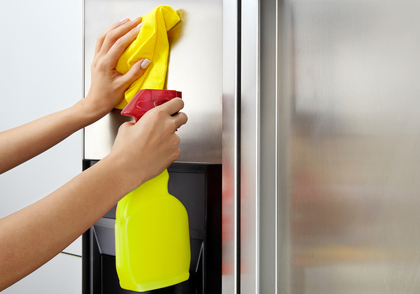Preparing Household Appliances for your Move
Moving is a lot of work, and it’s important to be prepared. This includes taking care of all the loose ends that can make your move more difficult, including your household appliances.
As you prepare your home for moving day, you should double-check that all your appliances are clean and ready to go with you! We’ve put together some tips on how to do just that.
First, confirm moving plans
Before you can begin prepping your appliances for the big day, you should first spend some time finalizing all the details of your move, including:
- Decide on a date and time for move-in day.
- Consider how you will get everything to your new home safely – whether that means trusting a reputable moving and packing company like Birds Moving or asking friends and family to help out.
- Organize where you’ll place large appliances in your new home and make sure they’ll fit. The last thing you want is a surprise on the day of.
Consult the manufacturer
For all major appliances, contact the dealer or refer to the owner’s manual before attempting to pack them yourself. If you’re unable to locate your manual, feel free to check the manufacturer’s website for specific moving instructions.
Unplug the fridge and freezer
To move your refrigerator and freezer out of your home without damaging the operating system, you will need to exert extra caution.
At least a full day before your move is scheduled, empty out both units and unplug them. Leave the doors open and allow at least 24 hours for the fridge and freezer to completely thaw inside.
After they’ve defrosted, wipe down the surfaces with a bleach cleaning solution to prevent mildew and bacteria from growing. You can also clean the evaporator pan, vacuum the unit's condenser or compressor to remove dust, as well as remove all shelves and drawers.
If your fridge has an ice maker or water dispenser, contact a plumber to have them disconnected.
Preparing the stove
While cleanliness is important for all major appliances during a move, it’s especially important for the stove. Make sure your entire stove, inside and out, has been cleaned prior to the move as any grease left on the stovetop will attract dust and leave spots on anything it comes in contact with. If your unit has a self-cleaning feature, now would be a great time to take advantage of it. Next, remove the racks and tape down all the knobs to prevent them from falling off mid-move.
Once the above is completed, it’s time to disconnect the stove. But doing so on your own, regardless of whether it’s gas or electric, can be dangerous. For example, if you own a gas stove, the gas line must be shut off prior to the move and if this is done incorrectly it can cause a gas leak or even worse, an explosion. Don’t risk it! Arrange for a professional to come by and disconnect it a day or so before your set to move.
Packing your washer
When you move, it’s important to pack your washing machine correctly to prevent damage. First, check to see if there is any water in your washing machine’s drum from the previous cycle. If there is, you must drain it before the unit can be moved. Consult the owner’s manual to find out how to do so safely.
Additionally, you must also disconnect the hoses. Typically each washer has two supply hoses – one for hot water and one for cold – and a drain hose. Detach them and tuck them out of the way so they don’t get caught under the machine during the move.
Last, but not least, secure the washer’s tub. Consult the owner’s manual on how to do this (it depends on the make and model). If you fail to secure the tub, it could shift too much in transit and cause severe harm to the machine and tub.
Disconnecting your dryer
Compared to prepping your washing machine, disconnecting your dryer is a walk in the park! Unlike washers, which require draining, dryers only have an air outlet hose that leads outside the home and releases hot air from the dryer. This hose can usually be removed from both the dryer and its outlet with just a few screws.
If you have an electric dryer, that’s it – your dryer is ready to go! However, if you own a gas dryer, you will need a professional to help in disconnecting the unit from the gas supply. We highly advise consulting a professional as disconnecting the line on your own could result in a gas leak or damage to the gas line.
Prepping the dishwasher
If you’re planning on bringing your dishwasher with you, there are a few things you need to do before disconnecting the appliance. First, empty the dishwasher and run a cleaning cycle to get rid of any standing water in the bottom of the tub. Once it stops running, open the door and let it dry out for at least 24 hours to prevent mold from growing inside and damaging your belongings during transit. Then, detach the utensil holder and any other loose parts that could become damaged in transit and pack them separately.
Next, disconnect the unit’s supply and drain hoses and allow any remaining water to pour out before removing them and storing them in a safe place.
Once you’ve completed the steps above and you’re certain that the unit’s interior is completely dry, you can go ahead and tape the door shut. For additional protection, you can also seal off your dishwasher’s door with a piece of cardboard or foam board so that it doesn’t get scuffed during transport.
Moving services you can count on
Now that you know how to prepare your major appliances for a successful move, why not leave the rest to us?
As Niagara’s largest and finest moving and packing company, we have the experience and equipment necessary to move your appliances safely and securely to your new home. We’ll take care of everything, from packing and loading to unloading and unpacking.
Contact us today for more information or for a free in-home survey consultation!





